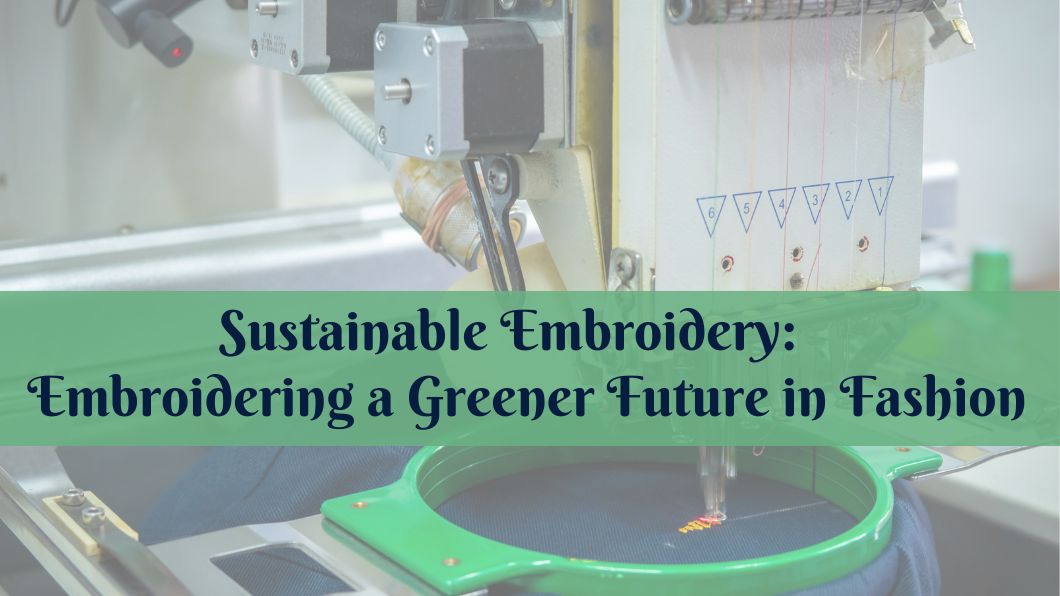
In today's world, where sustainability is at the forefront of many industries, the fashion landscape is undergoing a transformative shift towards more eco-friendly practices. One such area that's gaining prominence is sustainable embroidery – an innovative approach that marries the art of embellishment with the principles of environmental conservation. In this in-depth article, we'll explore the fascinating realm of sustainable embroidery, its benefits, techniques, and how it's reshaping the way we perceive fashion.
The Need for Sustainability in Fashion:
The fashion industry has long been criticized for its significant environmental impact, from resource-intensive production processes to excessive waste generation. As consumers become more conscious of their choices, brands are seeking ways to align with these values. Sustainable embroidery emerges as a thoughtful solution, offering a way to infuse creativity into fashion while minimizing the ecological footprint.
Defining Sustainable Embroidery:
At its core, sustainable embroidery involves the use of environmentally friendly materials, mindful production techniques, and designs that stand the test of time. This approach challenges the fast fashion cycle by creating garments that are durable, versatile, and have a lower impact on the planet.
Eco-Friendly Materials and Threads:
One of the pillars of sustainable embroidery is the use of eco-friendly materials. This includes organic fabrics, recycled threads, and biodegradable embellishments. By opting for materials that have a reduced impact on the environment, sustainable embroidery contributes to the conservation of resources and minimizes waste.
Dyeing Techniques and Water Conservation:
Traditional dyeing processes often involve excessive water consumption and the release of harmful chemicals into waterways. Sustainable embroidery embraces eco-friendly dyeing techniques that prioritize water conservation and minimize pollution. Natural dyes derived from plants, fruits, and other renewable sources play a pivotal role in this approach, creating beautiful, unique colors without harming the planet.
Longevity and Timeless Designs:
A significant aspect of sustainability in embroidery lies in creating designs that stand the test of time. Instead of following fleeting trends, sustainable embroidery focuses on crafting pieces with enduring appeal. These timeless designs not only reduce the need for constant replacements but also contribute to a more thoughtful and intentional approach to fashion consumption.
Ethical Production and Local Artisans:
Sustainable embroidery extends beyond materials and techniques. It also emphasizes ethical production practices and supports local artisans. Collaborations with skilled craftsmen from different regions not only preserve traditional embroidery techniques but also provide fair wages and dignified work environments.
The Role of Technology:
Modern technology has a role to play in sustainable embroidery as well. Innovative digitization processes minimize material waste by optimizing design layouts. Digital mock-ups and virtual prototypes reduce the need for physical samples, contributing to a more efficient production cycle.
Consumer Education and Conscious Choices:
As sustainable embroidery gains traction, educating consumers about its benefits becomes essential. Brands and artisans can actively engage with their audience, sharing the story behind each embroidered piece and its positive impact on the environment. Informed consumers are more likely to make conscious choices that align with their values.
Conclusion: Paving the Way for a Greener Future
Sustainable embroidery isn't merely an artistic endeavor; it's a powerful step toward reimagining the fashion industry's impact on the planet. By embracing eco-friendly materials, mindful production techniques, and designs that transcend trends, sustainable embroidery showcases the beauty of fashion that honors both artistry and the environment. As this movement continues to grow, it has the potential to reshape the way we perceive, create, and consume fashion, ultimately leading us toward a greener and more sustainable future.
